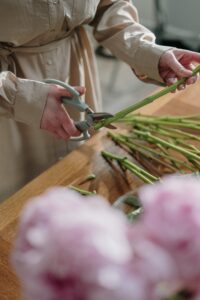Zinnia cut flowers are prized for their striking appearance and versatility in floral designs. They come in a wide array of colors, including bold reds, bright oranges, sunny yellows, soft pinks, and crisp whites. Zinnia blooms vary in shape and size, with single, semi-double, and double flowers available, as well as pom-pom, dahlia-flowered, and cactus-flowered forms.
Zinnias are beloved garden flowers renowned for their vibrant colors, diverse forms, and long-lasting blooms, making them popular choices for cut flower arrangements. These cheerful annuals belong to the Asteraceae family and are native to North and South America. Zinnias are easy to grow, low-maintenance plants that thrive in sunny locations with well-draining soil.
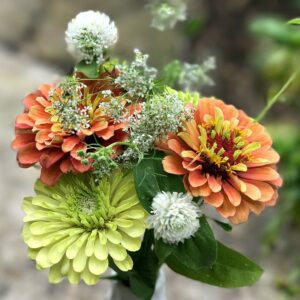
Whether used alone or combined with other flowers, zinnias add a pop of color and texture to bouquets, centerpieces, and floral arrangements. Their sturdy stems and long vase life make them ideal for both casual and formal displays. Zinnia cut flowers are suitable for various occasions, from everyday gatherings to weddings, parties, and special events.
With proper care and maintenance, zinnia cut flowers can provide weeks of enjoyment, brightening up homes, offices, and events with their beauty and charm. Whether grown in the garden or sourced from florists, zinnia cut flowers are sure to delight with their abundant blooms and vibrant hues.
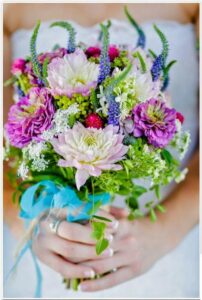
Harvesting Stage for Zinnia Cut Flowers
Zinnias are best harvested for cut flower arrangements when the blooms are fully open but haven’t yet started to fade or wilt. Choose zinnia blooms that are fully open and have vibrant, intense colors. Avoid harvesting flowers that are still closed or only partially open, as they may not fully develop once cut. Select zinnias with firm stems and petals that are free from damage, discoloration, or signs of pests or disease. Healthy flowers will have a fresher appearance and will last longer in a vase.
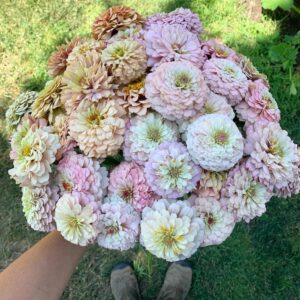
Sturdy Stem Help to Prolong Vase Life of Zinnia Cut Flowers
Select stems that are strong, sturdy, and free from any signs of damage, disease, or pests. Healthy stems will support the flowers well and help them last longer in a vase. Cut zinnia stems to the desired length for your vase or arrangement. Use sharp, clean scissors or pruning shears to make a clean, angled cut just above a leaf node or bud to encourage new growth.
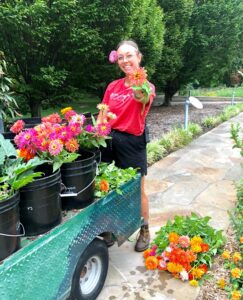
Harvesting Time
Harvest zinnias in the early morning or late afternoon when the temperatures are cooler and the flowers are well-hydrated. Avoid harvesting during the heat of the day, as the flowers may wilt more quickly.
Zinnia Stem Harvesting for Cut Flowers
Use clean, sharp pruners or garden shears to make a clean cut. Avoid tearing or damaging the stems. When cutting the stems, cut just above a set of leaves or leaf nodes. This encourages the plant to produce more flowers and lateral growth. Position your pruning shears or scissors at a 45-degree angle and make a swift, clean cut through the stem. Avoid tearing or crushing the stem, as this can damage the vascular tissues and hinder water uptake.
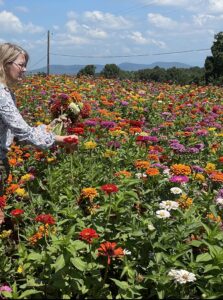
Remove any foliage on the lower part of the stem that will be submerged in water. This helps prevent bacterial growth and keeps the water clean. After cutting, immediately place the zinnia stems in a clean container filled with lukewarm water. This helps prevent wilting and ensures the flowers take up water quickly.
Homemade Preservatives to extend the vase life of zinnia cut flowers
You can use homemade preservatives to extend the vase life of zinnia cut flowers by using common household ingredients. Start by preparing a clean vase and filling it with the lukewarm water.
Add the white vinegar or lemon juice to the water. These acidic ingredients help to lower the pH of the water, preventing bacterial growth and keeping the flowers fresher for longer. Stir in the sugar until it dissolves completely. Sugar acts as a food source for the flowers, providing them with the energy they need to stay hydrated and vibrant. If desired, add a small amount of bleach to the water. Bleach helps to kill bacteria and fungi that can cause the water to become cloudy and foul-smelling. However, use caution and only add a very small amount, as too much bleach can harm the flowers.

Mix the solution thoroughly and then add your zinnia cut flowers to the vase. Make sure to remove any foliage that will be below the water line to prevent bacterial growth. Place the vase in a cool, well-ventilated area away from direct sunlight and heat sources.
Commercial Floral Preservatives
Commercial floral preservatives are readily available and specifically formulated to extend the vase life of cut flowers, including zinnias. These preservatives typically contain ingredients that help prevent bacterial growth, provide nutrients to the flowers, and lower the pH of the water to improve water uptake. You can purchase them at garden centers, florist shops, or online. Follow the manufacturer’s instructions for the proper dilution ratio and usage. Commercial preservatives are convenient and effective for keeping zinnia cut flowers fresh and vibrant for a longer period.
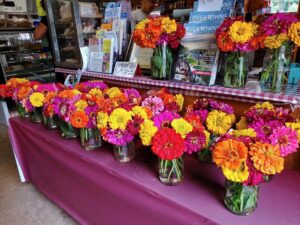
Re-cut the Zinnia Cut Flower Stem
Over time, the cut ends of flower stems can become clogged with bacteria, debris, and air pockets, hindering water uptake. By re-cutting the stems daily, you remove any blockages and ensure that water can freely travel up the stem to the flower heads, maintaining their freshness. Position the pruning shears at a 45-degree angle and make a fresh cut about half an inch (1.5 cm) above the previous cut. Cutting at an angle increases the surface area for water absorption and prevents the stem from sitting flat on the bottom of the vase, which can impede water uptake.
